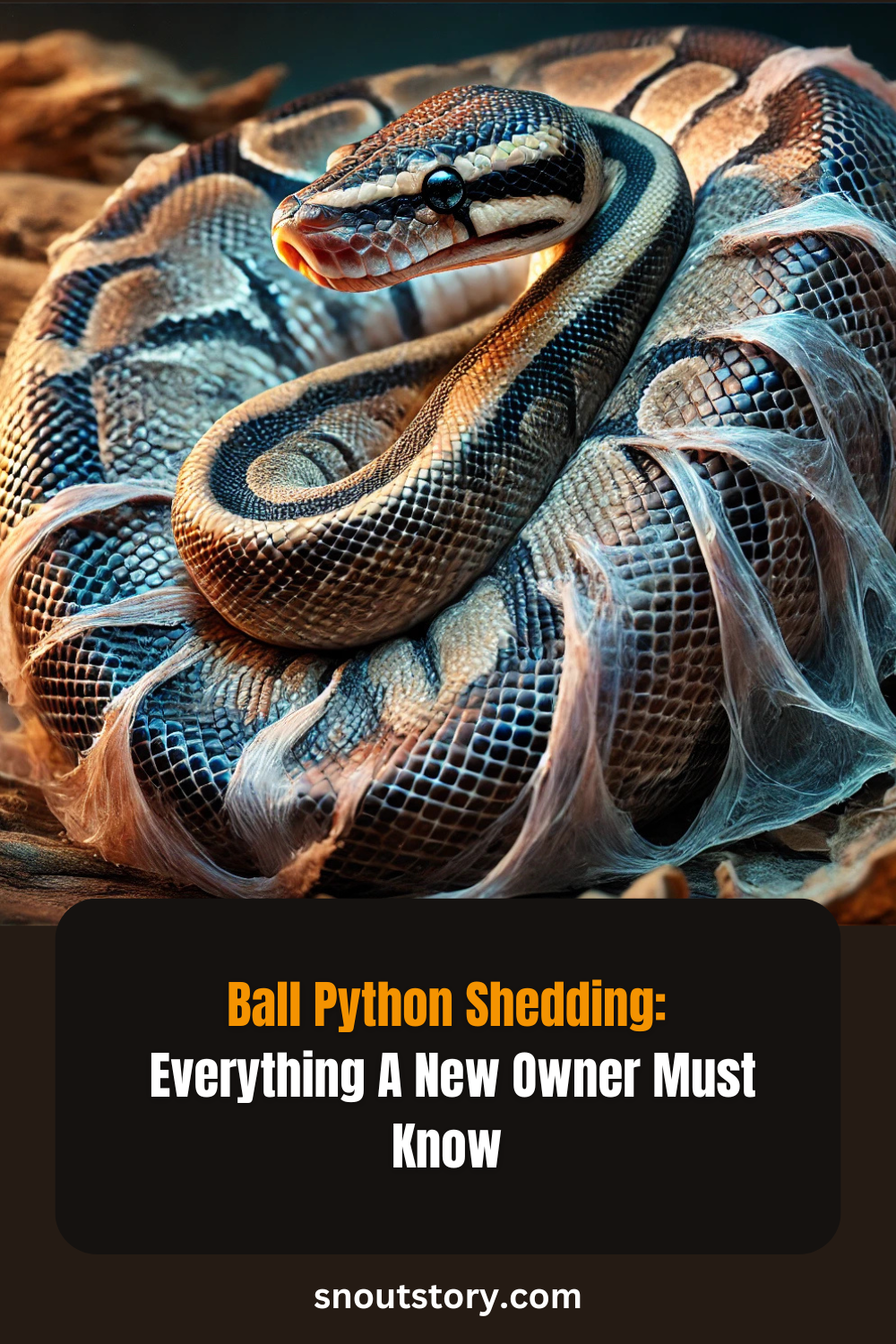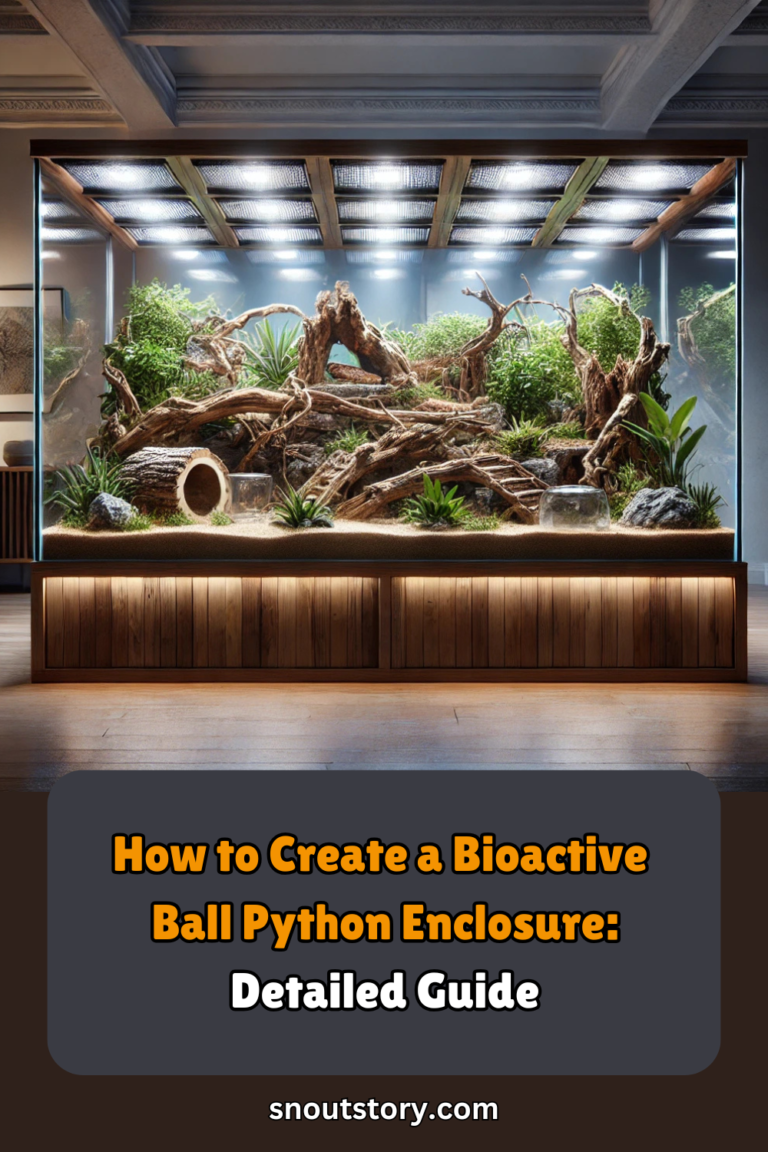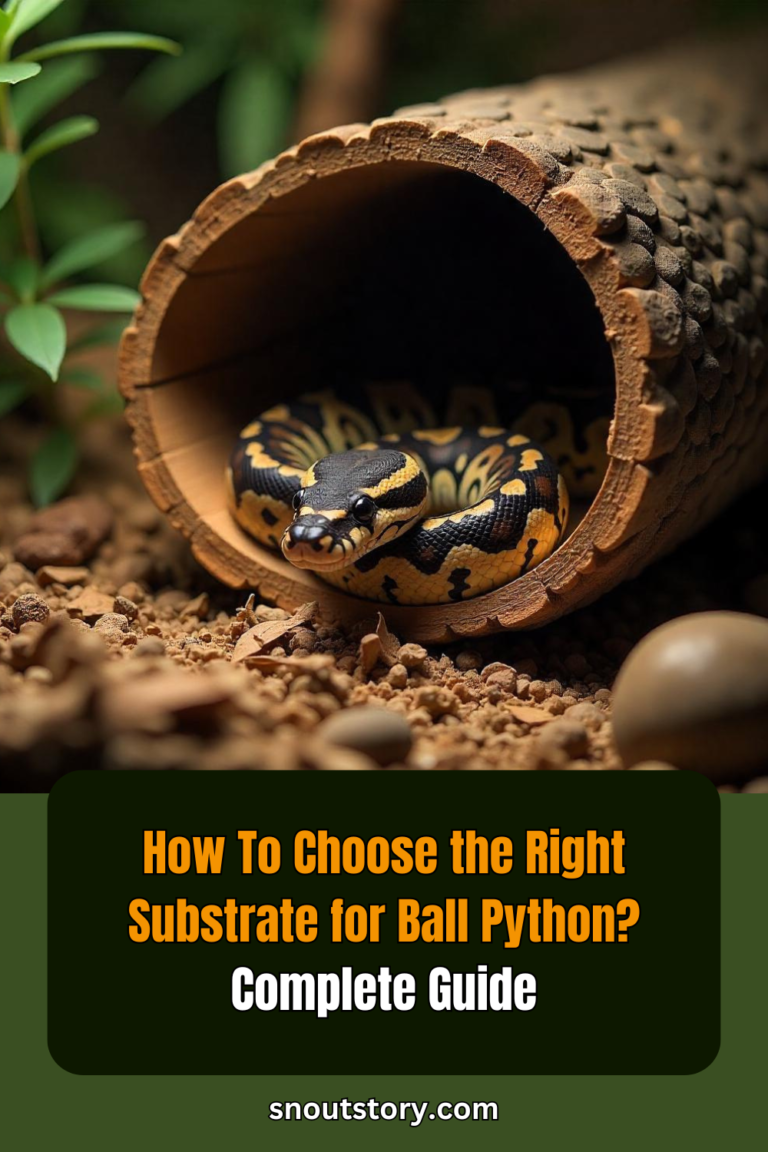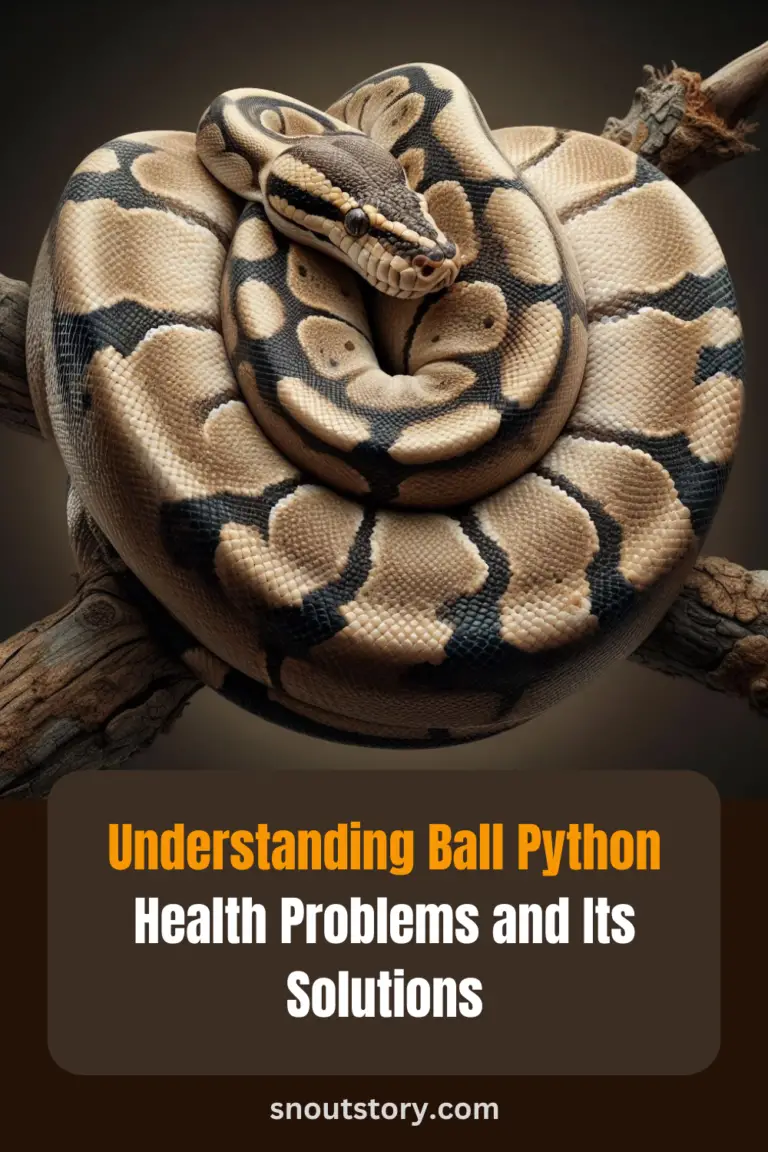Disclaimer
“This Blog is completely reader supported, for any purchase you make from affiliate links on this blog we earn a small commissions with no extra cost to you, which I use to feed my cute puppies 🥺”
Owning a ball python brings unique responsibilities, especially when it comes to understanding their shedding process. Shedding is a natural part of a ball python’s life cycle, but it can be a bit daunting for new owners.
Ensuring that your ball python has a smooth and healthy shed involves proper preparation and care. You’ll need to recognize the signs of an impending shed, maintain optimal humidity levels in the enclosure, and know how to assist your pet if any issues arise.
With the right knowledge and attention, you can help your ball python shed its skin effortlessly, keeping it healthy and comfortable.
What Are the Signs That My Ball Python Is About to Shed?

Recognizing that your ball python is about to shed can be crucial for ensuring a smooth process. You might notice its eyes becoming cloudy or bluish as it prepares to shed its outer layer. This change in eye color is due to fluid building up between the old and new layers of skin.
Another telltale sign is a dull or faded appearance in the snake’s overall color, as the old skin begins to loosen. Your ball python may also exhibit a decrease in appetite or become more reclusive during this period.
Providing a proper shedding environment, including increased humidity and a moist hide, can help facilitate an easier shed and ensure your snake remains comfortable and healthy.
How Often Do Ball Pythons Shed Their Skin?
As a ball python owner, understanding the frequency of your snake’s shedding is important for their health and well-being. Typically, ball pythons shed their skin every four to six weeks, but this can vary based on factors such as age, growth rate, and environmental conditions.
Younger snakes tend to shed more frequently as they grow rapidly, while adult ball pythons may shed less often. Keeping an eye on the conditions in their enclosure, such as temperature and humidity, can also influence shedding frequency. Providing optimal humidity levels and a proper diet can help ensure that your snake’s shedding process is smooth and complete. Regularly monitoring these aspects can help you anticipate and support your ball python through each shedding cycle.
What Should I Do to Prepare My Ball Python’s Enclosure for Shedding?
Preparing your ball python’s enclosure for shedding involves a few key adjustments to create an optimal environment. Start by increasing the humidity to around 60–70% to help loosen the old skin; this can be done by misting the enclosure or adding a water dish closer to the warm side.
Check the substrate—materials like cypress mulch or coconut fiber retain moisture well and can support proper humidity levels. Adding a humid hide with damp moss gives your python a dedicated spot to hydrate their skin. Ensure the temperature gradient remains stable, as stress from fluctuating heat can complicate the shedding process.
Avoid handling your snake excessively during this time and focus on keeping the enclosure clean and comfortable, minimizing stress for a smooth shed.
Here’s a detailed guide to creating an Ideal Ball Python Enclosure (Click Here to Read)
How Can I Maintain Proper Humidity Levels for a Ball Python During Shedding?
Maintaining proper humidity levels during your ball python’s shedding process can make a huge difference in ensuring the shed is complete and stress-free. Aim to keep the enclosure humidity between 60–70%, as this range softens the old skin and helps it come off smoothly.
You can boost humidity by misting the enclosure lightly with water, but don’t overdo it to the point where the substrate becomes soggy. Adding a humid hide—lined with damp sphagnum moss or paper towels—provides a localized high-humidity area that your python can use as needed.
If the enclosure has a screen top, consider partially covering it with a damp towel or foil to trap moisture while maintaining ventilation. Using a reliable hygrometer to monitor levels will help you avoid guessing and ensure consistent conditions throughout the shedding process.
Here’s one of the Best rated and a reliable Hygrometer you can use to ensure your Ball Pythons enclosure mimics its natural habitat and has proper humidity levels:
Thermometer and Humidity Gauge Hygrometer for Reptile Tank

What Should I Do If My Ball Python Has Difficulty Shedding?
If your ball python is having difficulty shedding, you can take a few practical steps to help them without causing undue stress. Start by increasing the enclosure’s humidity to around 70–80% by misting or adding a larger water dish. A soak in lukewarm water for 15–20 minutes can soften stuck skin; ensure the water is shallow enough to avoid any risk of drowning.
Gently rub the skin with a damp paper towel or soft cloth after the soak, focusing on areas like the tail and eyes where retained skin is common. Never force the skin off, as this can harm your snake.
If issues persist or the retained shed affects critical areas like the eyes, consult a reptile veterinarian for guidance. Keeping the enclosure conditions consistent and providing a humid hide can help prevent future shedding problems.
Adding a rough and moist hide can help your Ball Python rub itself against it and ease the process of shedding. Here’s one such hide you can use to ensure your snake has a easy shedding experience:
Zilla Pet Terrarium Rock Lair


Are There Any Health Issues Related to Shedding in Ball Pythons?
Shedding is a natural process for ball pythons, but complications can arise if certain conditions aren’t met. Retained shed, where patches of old skin fail to come off, is one of the most common issues and is often linked to low humidity or inadequate hydration.
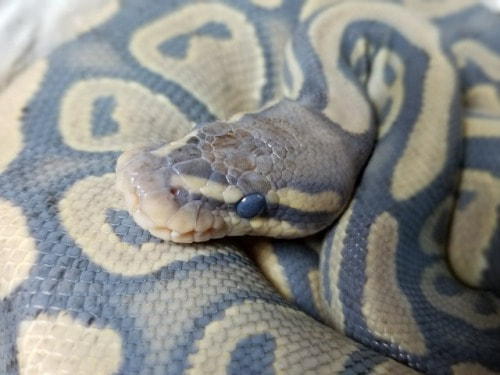
You might notice bits of skin stuck around the eyes, tail tip, or along the body, which can lead to discomfort or even circulation problems if left unaddressed. Eye caps, the protective layers over the eyes, are particularly prone to being retained and can cause vision problems. To resolve this, gently soaking your python in lukewarm water and providing a moist hide can encourage the skin to loosen.
Persistent shedding issues may signal underlying health concerns like dehydration, malnutrition, or skin infections, so keeping an eye on these factors is essential. If problems persist or worsen, consulting a reptile veterinarian ensures your python gets the care it needs.
How Can I Safely Handle My Ball Python During the Shedding Process?
Handling your ball python during its shedding process requires extra care to ensure its comfort and well-being. As your snake prepares to shed, it may become more sensitive or irritable due to reduced vision caused by the cloudiness of its eye caps.
If you need to handle it, approach calmly and avoid sudden movements to prevent stress. Always support its body fully, being gentle and avoiding any areas where the skin appears loose or dry. Minimize handling as much as possible during this time to let it focus on shedding. If the snake is struggling with stuck shed, you can assist by providing a moist hide or gently soaking it in lukewarm water for 20–30 minutes to help loosen the skin.
Avoid peeling the shed yourself, as this can harm the underlying scales. Patience and a hands-off approach, except when necessary, are key to helping your python shed safely and successfully.
What Are the Best Practices for Post-Shed Care of a Ball Python?
After your ball python has completed shedding, taking the right steps for post-shed care can help maintain its health and comfort. Start by carefully inspecting its skin to ensure the shed came off entirely, especially around the eyes and tail tip, where retained shed is most common.
Any leftover skin can be gently removed by providing a soak in lukewarm water or allowing the snake to rub against a rough surface like a damp towel. Check the enclosure’s humidity levels, as maintaining proper humidity (around 50–60%) prevents future shedding issues.
Offer fresh water, as snakes often rehydrate after shedding. Feeding your ball python post-shed can be effective since their appetite usually increases once the process is complete. Keep handling minimal for a day or two to let them settle back into their routine comfortably. A little extra care after shedding can make a big difference in your python’s overall well-being.
How Does Shedding Affect My Ball Python’s Appetite and Behavior?
Shedding can significantly influence your ball python’s appetite and behavior, making it essential to recognize the signs and adjust your approach during this period. As your snake prepares to shed, it may refuse food, which is completely normal.
Their energy shifts toward the shedding process, and the discomfort from tight skin or cloudy vision can make them less interested in eating. Behaviorally, you might notice your python becoming more reclusive, spending more time in its hide or avoiding handling.
Some may become more defensive due to impaired vision from the opaque eye caps. To support them, ensure their enclosure maintains optimal humidity levels (around 60–70%) to facilitate a smooth shed.
Avoid offering food during this time and limit handling to reduce stress. Once the shedding is complete, their appetite and behavior usually return to normal, and you can resume their feeding schedule.
Conclusion
If you found our content helpful and valuable, you can support us by making any of your purchases (even products other than recommended in the blog) from our affiliate links (Ofc with no extra cost to you😉).
Understanding the shedding process in ball pythons is essential for every new owner, as it plays a critical role in their overall health and well-being. From recognizing the early signs of shedding to maintaining optimal humidity levels and practicing safe handling, each step ensures your python experiences a smooth and stress-free shed.
Additionally, addressing post-shed care and being vigilant about potential health concerns, such as stuck shed or dehydration, can prevent long-term issues. By equipping yourself with the right knowledge and creating an environment that supports their natural shedding cycle, you can help your ball python thrive.
Stay proactive, attentive, and ready to adapt to their needs, ensuring both you and your python enjoy a rewarding and successful companionship.
Recommended
How to Create a Bioactive Ball Python Enclosure: Detailed Guide
12 Ball Python Enclosure Setup Ideas For Realistic Habitat
How To Choose the Right Substrate for Ball Python? Complete Guide
Why Is My Ball Python Not Eating? And How To Fix It!
How To Breed Ball Python – A Comprehensive Guide
Understanding Ball Python Health Problems And It’s Solutions
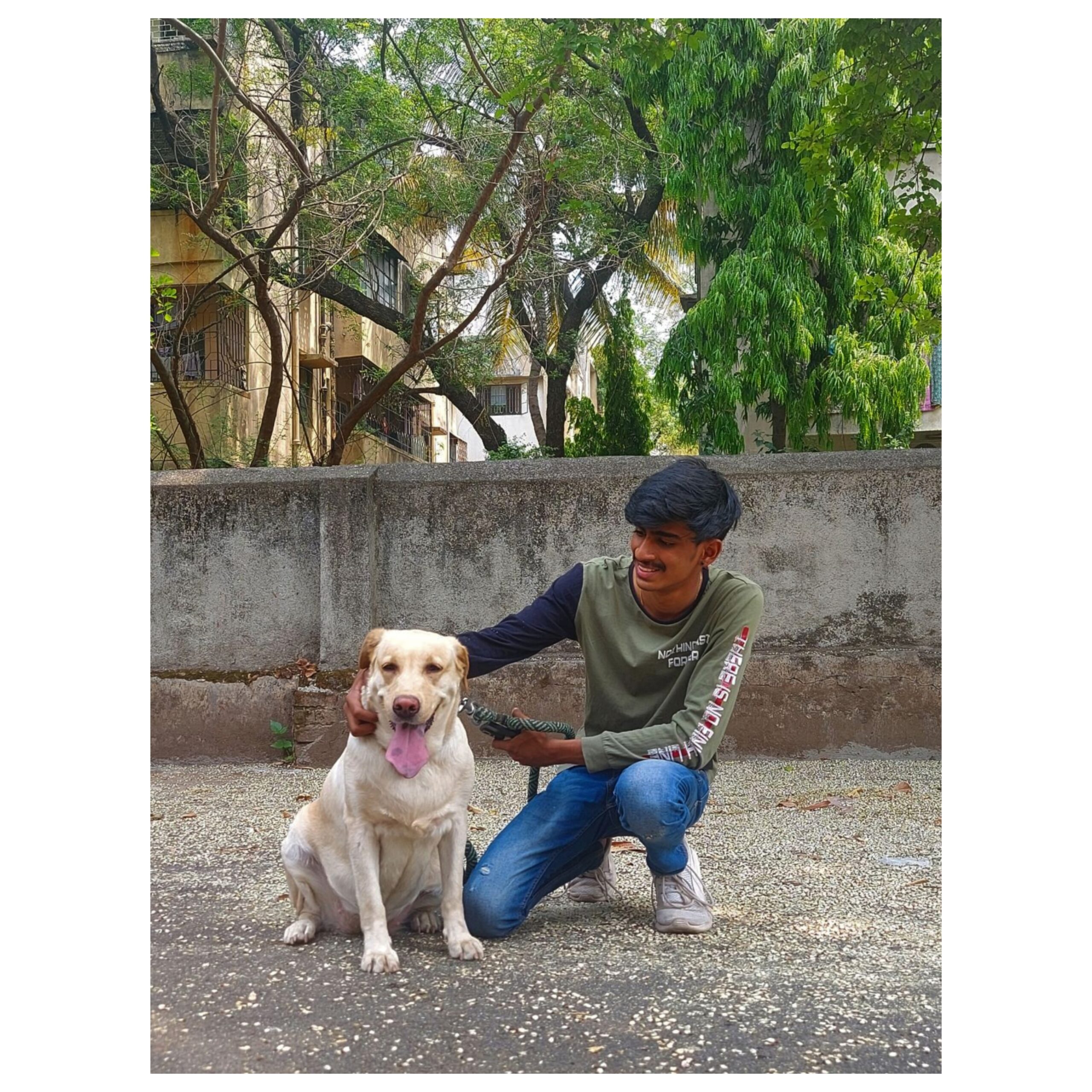
Vedant Narvekar is an experienced digital marketing expert with a profound love for nature and animals. With a career rooted in leveraging online platforms to drive engagement and promote meaningful causes, Vedant’s passion for animals inspired him to start Snout Story—a blog dedicated to educating people about pet keeping and sharing proper knowledge about caring for animals. Drawing on his expertise in digital marketing, Vedant utilizes his platform to advocate for responsible pet ownership, providing valuable insights on pet care, training, nutrition, and more. Through Snout Story, Vedant aims to empower pet lovers with the information they need to provide the best possible care for their furry companions, while also fostering a deeper appreciation for the natural world and the creatures that inhabit it.

